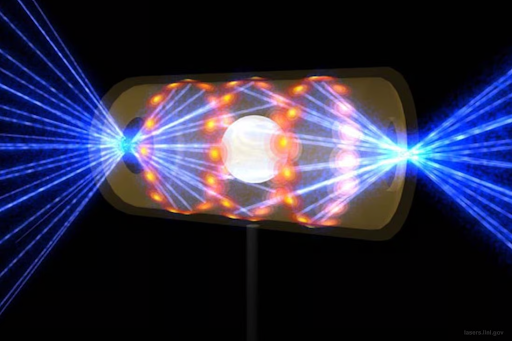Breakthrough in nuclear fusion advances a clean energy future

Image via Lawrence Livermore National Laboratory
For the first time in history, scientists have discovered a method to make nuclear fusion give off more energy than what’s required to make it. The science community is hailing the breakthrough as a historic step towards a sustainable, carbon free future for energy.
Nuclear fusion is the same process that’s used to create the energy in the sun. It occurs when atoms are fused to make a heavier atom, expelling an immense amount of heat and energy in the process. For the past 70 years, 50 different countries have tried to recreate this process in the hopes of creating a cheap and endless supply of energy. Julio Friedmann, the chief scientist at Carbon Direct and a former energy technologist, noted that “Unlike coal, you only need a small amount of hydrogen, and it is the most abundant thing found in the universe. Hydrogen is found in water so the stuff that generates this energy is wildly unlimited and it is clean.”
Uncovering the methods to harvest nuclear fusion energy is especially critical in the fight against climate change. Energy sources like coal and gas are a major contributor to the warming of our planet because of the carbon emissions they produce. However, being able to use nuclear fusion effectively could end the need for fossil fuels. Also, with the human population hitting 8 billion this November, the demand for accessible and affordable energy is more important than ever.
Previously, scientists couldn’t figure out how to make nuclear fusion sustainable because it required more energy than the fusion process created. That all changed when American researchers at the National Ignition Facility (NIF) recently discovered a way to create a positive energy gain. By projecting 192 laser beams into a small metal can called a hohlraum, the team was able to turn 2.05 megajoules of energy into 3.15 megajoules.
While this is a groundbreaking development, scientists agree that there’s still plenty of work to be done. Experts say the next step is to refine the nuclear fusion process to increase its energy output. Additionally, we still don’t have a solution to the toxic waste that nuclear fusion produces before we can use this energy on a large scale. It may take decades before nuclear energy becomes open for commercial use, but this advancement has allowed the world to take a major step towards a clean energy future.

Rhiannon Stevens is a Senior and the Sentinel's Social Media Editor. They love creating art, sewing clothes, and listening to true crime podcasts. She’s...













